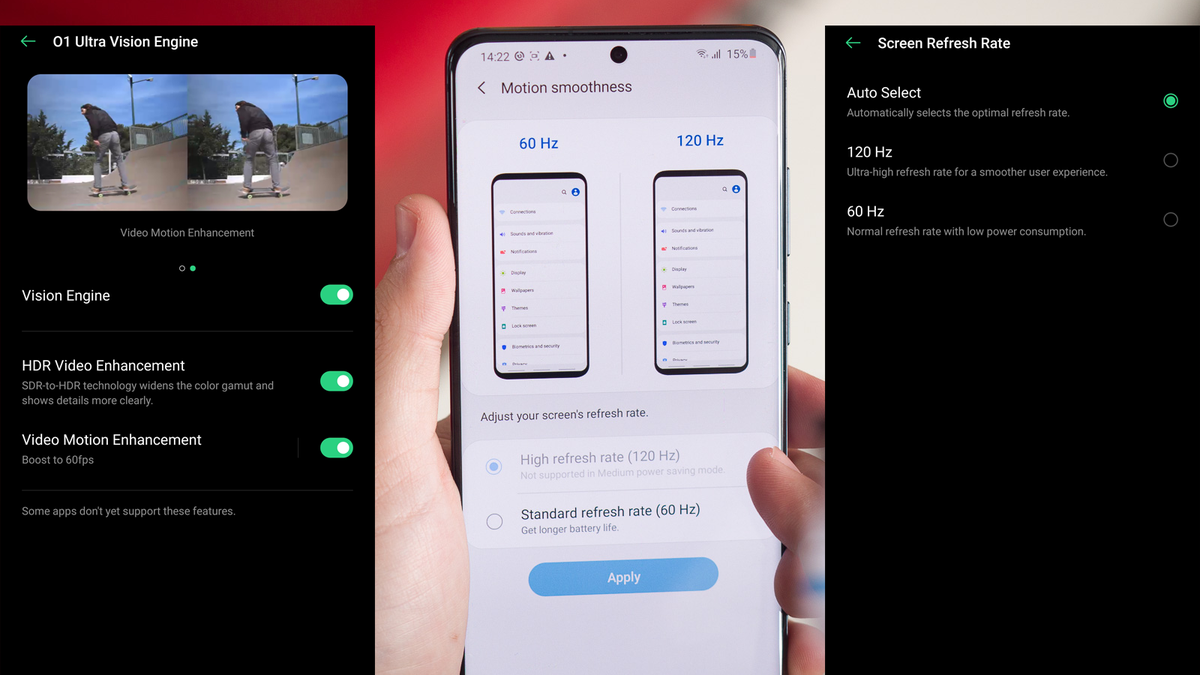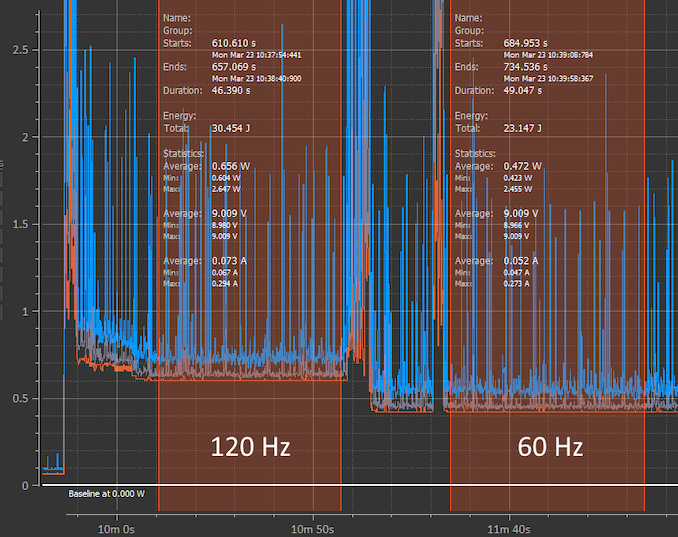This flagship phone hints how OnePlus 8 Pro will shame Galaxy S20 Ultra's 120Hz display
We may earn a commission if you make a purchase from the links on this page.

UPDATE: OnePlus has now officially announced its new flagships. Read our OnePlus 8 and 8 Pro news story for all the details!
By now, we know almost everything there is to know about the upcoming OnePlus 8 family of handsets, thanks to a profusion of leaks and official teasers. One of those teasers details "unseen" high refresh rate display that, unlike most of what we've had so far in that department, will be intelligent and adaptive, or so OnePlus blurb says in its 120 Hz Fluid Display deep dive.
Among promises that the "OnePlus's new 120 Hz Fluid Display will be the best you’ll lay eyes on in 2020," there are hints what will make the OnePlus 8 Pro panel so great. Besides 1000+ nits of peak brightness, and excellent color calibration, the screen package adds hardware components that allow variable refresh rate based on what you are doing.
Since video is usually shot at 24fps or 30fps, the 120Hz refresh can go to waste, but OnePlus has added a custom motion estimation-motion compensation (MEMC) solution that can upscale lower frame rates to match the higher display refresh. What if we tell you that we already know how this display will look like and behave?
The 120 Hz Fluid Display technology of OnePlus 8 Pro is already here
We've been playing with Oppo's Find X2 Pro over the weekend, and noticed that its 6.7"120Hz "Ultra Vision" screen can already do exactly what OnePlus is promising for the 6.7"120 Hz Fluid Display technology. Variable refresh rate based on the content you are currently viewing? Check.
120Hz at the full 1440p screen resolution? Check. Upscaling content frame rate to match the one of the display? Yep, it's called Ultra Vision engine, able to upscale video to 60fps, and, whaddaya know, the short video demoing this feature in the settings menu is with a... dude on a skate board.
Now, do you remember this January teaser from Pete Lau, the OnePlus CEO?
If you’ve seen high-quality TVs, you’re no stranger to MEMC. We’ve created a custom MEMC chip that can push ordinary 30fps video up to 120, so any video gets the full advantage of our 120Hz Fluid Display. pic.twitter.com/YPD3fw5uOn
— Pete Lau (@PeteLau) January 16, 2020
OK, you catch the drift. Oppo, Vivo and OnePlus are part of one parent company - BBK Holding - so it is not surprising when what looks like similar technologies pop up in phones from the three companies under different marketing names.
Not only does the flagship Oppo X2 Pro that costs as much as the Galaxy S20+, offer a Snapdragon 865 chipset with 5G modem that can be used on, say, the T-Mobile network, and 12GB RAM/512GB storage memory count, or 65W charging, but it also includes components rumored to be in the OnePlus 8 series as well.
Besides the aforementioned 6.7" adaptive 120Hz Ultra Vision display, the X2 Pro also has the 48MP Sony IMX689 and IMX586 sensors - you know, the ones that are said to be in the OnePlus 8 Pro as well.
#OnePlus8Pro to feature 48MP IMX689 as the Main Sensor (F/1.78), 48MP IMX586 Ultra-Wide (F/2.2) & 120° FOV. 8MP (F/2.44) Telephoto w/ 3X Optical & 30X Digital Zoom + 5MP Color Filter. New Night Portrait Mode, '3-HDR' Video, Cinematic Effects & Better OIS! https://t.co/2EfheWwNr8 pic.twitter.com/kVfZcfk5BQ
— Ishan Agarwal (@ishanagarwal24) March 29, 2020
OnePlus 8 Pro vs Samsung Galaxy S20 Ultra 120Hz display specs
Long story short, one needs to look no further than the excellent Oppo X2 Pro to gauge how the OnePlus 8 Pro will perform when it gets announced, perhaps as soon as this week.
We list the main OnePlus 8 Pro vs Samsung Galaxy S20 Ultra 120Hz display specs differences to expect:
- Battery life: 120Hz refresh impact should be better with adaptive (OnePlus) than frozen (S20) rate.
- 120 Hz at full 1440p resolution: yes for OnePlus 8 Pro, no for Galaxy S20 Ultra.
- Content frame rate: OnePlus 8 Pro would be able to upscale video to higher frame rates.
To wit, the OnePlus 8 Pro should be gentler on its battery in 120Hz mode than the S20 Ultra thanks to the auto refresh rate pick that the software will do, whereas the S20 runs the phone's display on 120Hz at all times. Just look at the ~30% difference in power consumption between 60Hz and 120Hz in the most basic of scenarios - screen on showing just black - and you'll see why a variable refresh rate is the smarter choice.

Galaxy S20 Ultra's 656mW (120Hz) vs 472mW (60Hz) display power consumption difference
According to AnandTech, Samsung didn't splurge on hardware components like "additional MIPI interfaces between the SoC and the display controller IC," and that is why the S20 series is unable to run its display at 120Hz in full QHD+ resolution, unlike the Oppo, and, tangentially, the upcoming OnePlus 8 Pro. Moreover, while Samsung has apparently placed a software stack that references various refresh rate levels - from 48Hz to 120Hz - an automatic refresh rate solution hasn't been implemented for some reason, so the S20 stays on 120Hz at all times.
The moral of the story? The upcoming OnePlus 8 Pro is likely to land with a better display than the Galaxy S20 Ultra. Now the only thing left to know is what will be the actual price difference, as something tells us that the OnePlus gear won't be half-price compared to Samsung's flagships any more, top-shelf hardware and all that.
Follow us on Google News












Things that are NOT allowed:
To help keep our community safe and free from spam, we apply temporary limits to newly created accounts: